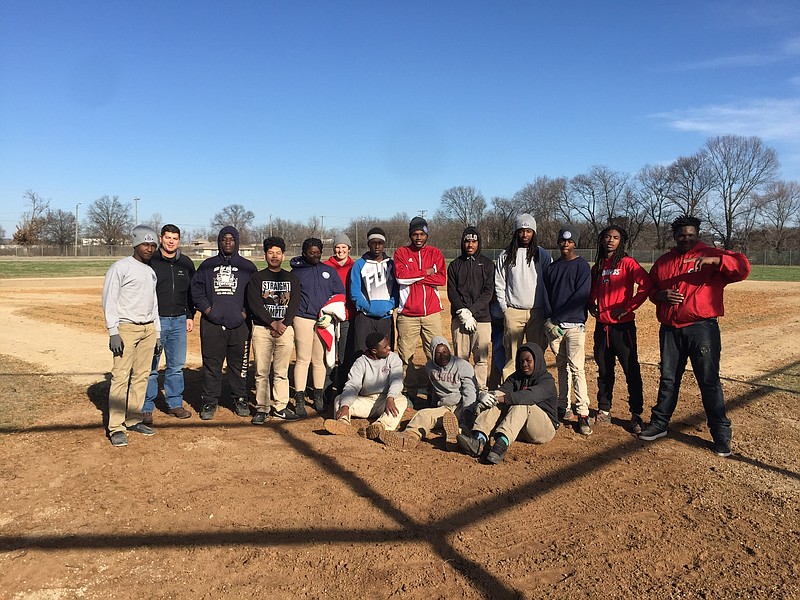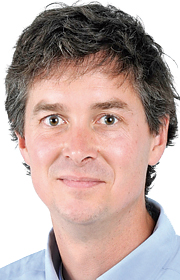Read Part Two: Howard baseball's future ain't what it used to be
___
Last summer, Jon Johnson, a 31-year old Spanish teacher and baseball coach from north Alabama, accepted a job at The Howard School. As a sort of celebration, he drove two friends over to the school to see the baseball field.
Or what was left of it.
They drove around back, near the decaying track and crumbling football stadium, next to the building where they pass out food boxes for the weekend, across from the dead-end road where police sit watching from patrol cars, just beyond the interstate exhaust and rumble.
Johnson parked. The three looked out at what may have been the most neglected field in the county.
View other columns by David Cook
Grass so high you'd lose your shoes. Gopher holes. Rocks. Trash. Ruts from the tackling sled left behind by the football team. A broken scoreboard. An outfield like a pasture. An infield that wasn't.
"Don't you all see it?" Johnson asked. "Don't you see a beautiful field?"
His friends looked at him. Then back at the field. Back at Johnson.
"You're crazy," they said.
He was.
It was the perfect kind of crazy Howard needed.
One year earlier, a trio of then-juniors - Cameron Johnson, Antonio Daniels, Jwun Gamble - tried to resurrect baseball at Howard. They begged hallways, classrooms and offices for help forming a baseball team. They were no-quit guys; one summer in the park, they played ball with a wooden bat. Then, it broke.
"We used duct tape," said Cameron. "And kept playing."
Howard is a football and basketball school; baseball's been dead for years. Out of 900 students, they got maybe 10 to play.
Hugh Crawford II, a math teacher from Arizona, offered to coach. He mowed the field. (Didn't help much.) Got donations for two or three new bats and several gloves. Sometimes, they practiced indoors with whiffle balls. All their games were away games.
"Lost them all," said Antonio.
That was last year.
Then, the school hired Johnson. Word spread about his contagious and positive let's-make-Howard-baseball-thrive vision.
"It's not about just this year. It's not about next year. It's about every person that comes through this program in the future," he said. "And these guys are going to help build that."
But the field would have to wait.
First, they needed a team.
Johnson and that core group of students began recruiting. They convinced Antwain Monfort, a junior and natural leader, to play. That made four. Every day in Spanish, Johnson asked his students: Quieren jugar al beisbol?
Finally, one guy raised his hand. Emeterio Ramirez. A freshman. Just moved from L.A. Didn't know baseball from bocce.
But he liked Johnson. Liked Antonio and the seniors, who started teaching him to throw.
That made five.
Another freshman, Aaron Williams, signed on. He'd never been on a team before.
"But I seen the bond between them and never seen anything like it," he said. "This is like a second family."
Six.
A few more guys - Terrance Beamon, Tay Sailes, Rod Crutcher, Jarques Howard - made 10.
By December, they had 18.
Time to work on the field.
They started in the dead of winter. Ten-hour Saturdays, and after-church Sundays. In sleet. Hail. Rain. Most guys didn't own thick, heavy coats. Some worked in shorts. ("It's OK, Coach. I was born in December.")
They removed all the rocks. Cleaned out the trash. Raked down 88 tons of topsoil and sand, which Johnson bought on a six-month loan. Marked dimensions for bases. Dug out the batting cages, then bullpens. Sowed 250 pounds of winter rye, but had to first soften up that rocky infield.
Johnson couldn't afford a tractor.
So he rented a tiller.
And the students tilled the infield by hand until their arms shook.
It took 10 hours.
The students were working so hard, other adults at Howard thought Johnson and Crawford had hired a landscaping crew.
"That's when it really sunk in," said Crawford.
All this wasn't just about the baseball.
"Becoming a man," said Cameron. "Leaving a legacy."
"Hope for our future," said Antonio.
Today, the field is nearly playable. Little shoots of winter rye - sowed last weekend, before the rains - poke up through the infield. A clean, white plate sits proudly in its spot at home, like some north star.
Johnson's fundraising - Build a Field, Build a Future - through Generosity.com. For $215, you can outfit a player cleats to cap. (Two guys own gloves. Nobody has cleats. Or a bat. Or batting gloves.)
With a crazy gleam in his eye, Johnson will tell you about his four-year plan: lights for night games, new fencing, irrigation, actual dugouts, big and wide bleachers, an indoor facility, with a weight room. He sees hundreds of fans. Sees Little League back in the neighborhood.
Most of all, he sees the return of baseball.
On March 14, Howard plays its first home game in years.
With 11 more on the schedule after that.
"When these guys step on the field, they will know it's a field they built," Johnson said.
How beautiful.
Don't you see it, too?
David Cook writes Sunday column and can be reached at dcook@timesfreepress.com or 423-757-6329. Follow him on Facebook at DavidCookTFP.

